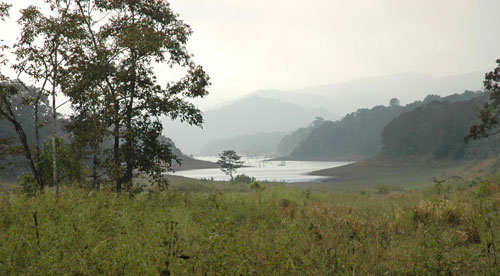|
|
The South
Asian Life & Times - SALT |
|
|||
|
Contents
Art
Threatened
Dwellers
Rom Whitaker
Tee
Time @ Delhi
|
|
||||
|
Western Ghats – A Magical Refuge
At a meeting in the Russian city of St Petersburg on
July 1, 2012, the Western Ghats of India, a 1,600km long mountain chain
along its western coast, was inscribed as a UNESCO World Heritage Site
(WHS). Thirty-nine sites within seven bio-diversity zones of this
north-south running mountain chain, will be part of the newly designated WHS
– all are either National Parks or Reserved Forests and Sanctuaries. Unlike
the Himalayan National Parks, which remain uninhabited because of their
rugged inaccessibility, those in the Western Ghats are inhabited, though
scantily. Older than the Himalaya mountains ,the Western Ghats
are believed to have been formed during the break-up of the super continent
Gondwana some 150 million years ago. The mountain chain is the faulted
western edge of the Deccan Plateau, and runs parallel to the Arabian Sea
coastline. Though Western Ghats comprise about 7% of India's
land area, only 15% of this forested range is protected. Endowed with unique
forest ecosystems, its tropical evergreen rainforests, rivers and grasslands
contain a high level of plant and animal diversity, including rare and
endemic species, and at least 325 globally threatened flora, fauna, bird,
amphibian, reptile and fish species. It is, not surprisingly, one of the
world’s eight ‘hottest hotspots’ of biological diversity. Habitat
transformation, over-exploitation, pollution, urbanisation and climate
change have accelerated the recent bio-diversity loss. The exotic fauna of the
Western Ghats includes the endangered
Lion-tailed
Macaque, Elephant, Gaur, Tiger, Jungle Cat, Leopard Cat, Wild Dog, Sloth
Bear, Wild Pig, Sambar, Spotted Deer, Nilgiri Langur, Slender Loris, Bonnet
Macaque, Common Langur, Barking Deer, Mouse Deer, Malabar Giant Squirrel,
Giant Flying Squirrel, Nilgiri Marten, Common Otter, Brown Mongoose, Civets,
Porcupine, Pangolin, Python, Cobra, King Cobra, Emerald Dove, Black Bulbul
and Malabar Trogon and many more. The newly acquired WHS
status has brought immense relief and joy to environmentalists but the same
may not be true for states that have had either a guarded reaction or have
openly protested against the international visibility. The mountain chains
run through the western parts of the states of Maharashtra, Goa, Karnataka,
Kerala, and Tamil Nadu. Faced with enormous population pressure and the
resulting infrastructure development, the lush mountains are at risk of a
biodiversity crisis. We need national parks and sanctuaries, but also
biological corridors connecting these protected areas to save the rich
genetic diversity and its habitat – primarily from ‘poachers and
developers.’ Peter
Lawton’s recent study into Western Ghats looked at many such biological
corridors and concluded that, “if the international and Indian community
quickly bought up contiguous land to protect national parks from developers,
we could save the last remaining tigers in India from extinction. With that
plus stricter anti-poaching measures, it can be done.”
Lawton’s organisation has helped and
supported, since 1987, the “courageous forest guards (who often end their
days maimed by poachers or being killed on duty), provided anti-poaching
mobility, and supported stoical scientists and conservationists who are
active around many national parks (in India).” UNESCO’s inscription could not have been timelier.
|
|||||
|
Copyright © 2000 - 2012 [the-south-asian.com]. Intellectual Property. All rights reserved. |
|||||
